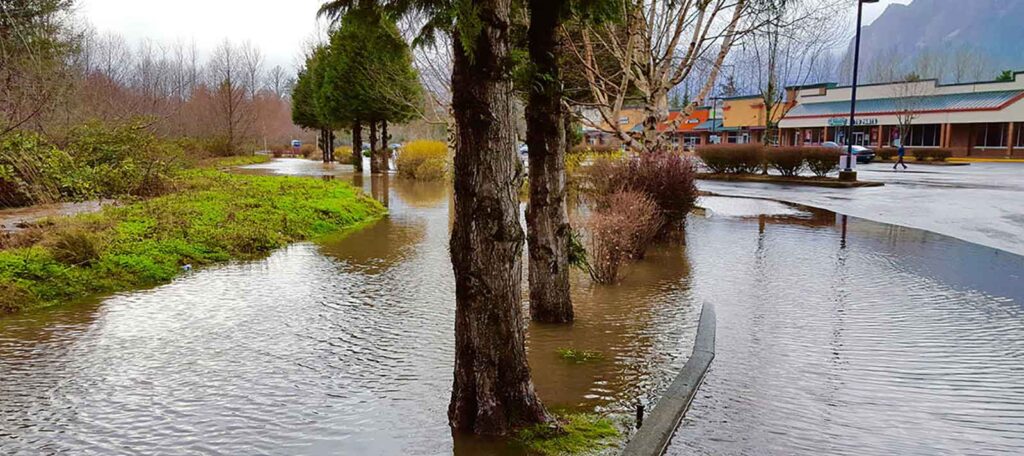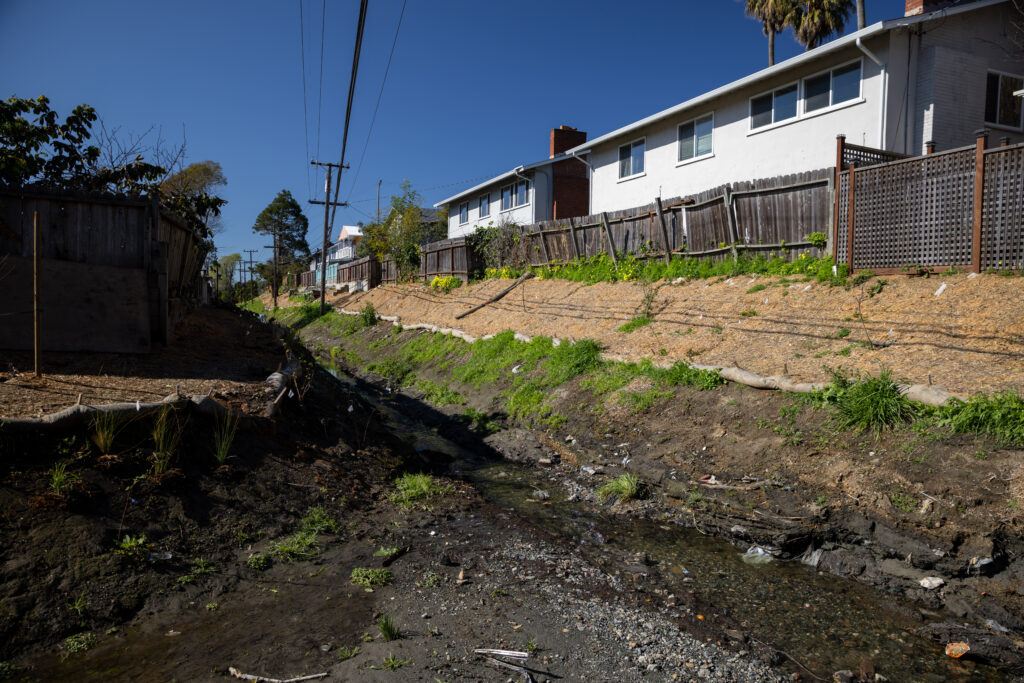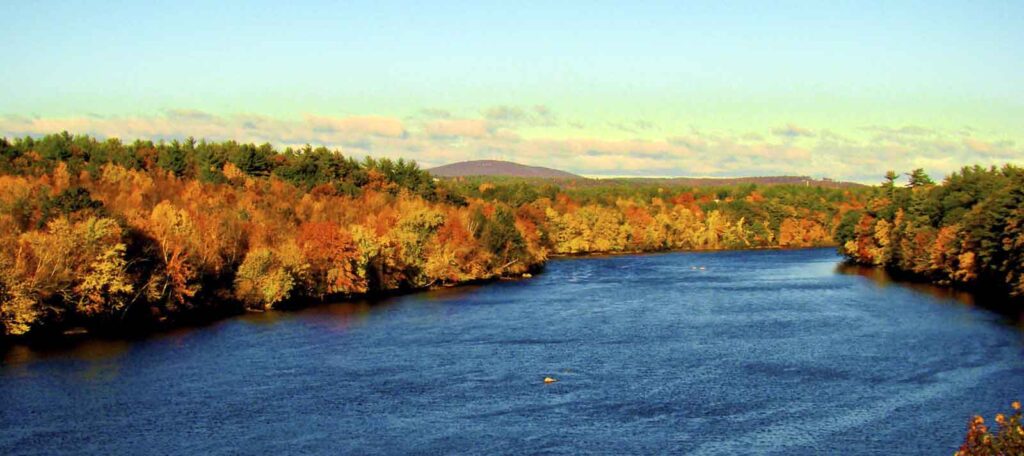Could The National Flood Insurance Program Be Harming Endangered Species?
President Obama is visiting Flint, Michigan on May 4 to meet with residents and witness the city’s efforts to recover from lead-contaminated drinking water supplies.

Big progress was made this month for salmon and floodplains in Oregon. On April 14, the National Oceanic and Atmospheric Administration released its findings on the impact of the National Flood Insurance Program on endangered fish and their habitat in Oregon rivers. These findings are accompanied by a set of recommended changes to how the National Flood Insurance Program is implemented in Oregon that will reduce its impact on survival of endangered salmon and steelhead in the State.
Floodplains Are Important To Rivers And People
Floodplains are the lands along a waterway that become inundated during periodic flooding. While often referred to in land-use planning terms, a floodplain is actually an important part of a river. Where allowed to flood, floodplains support an array of ecological and socio-economic functions. They provide habitat to fish and wildlife, facilitate an exchange of nutrients between land and water, recharge groundwater, provide a path for flood water that can protect well-sited built structures from damage, and provide clean water and scenic spaces.
Unfortunately, development often disconnects rivers and floodplains, hindering the beneficial functions they provide. Where development has occurred in a floodplain, the National Flood Insurance Program (the NFIP) is tasked with providing federally-subsidized flood insurance and promoting sound floodplain management. To enroll in the NFIP, communities must agree to map their flood risk areas, and implement minimum building standards for all development in floodplains.
Even when meeting minimum NFIP building standards, developing in the floodplain leads to flood damaged homes and businesses and impaired ecosystems. Sadly, by providing flood insurance coverage to properties in floodplains, the NFIP has encouraged floodplain development (and subsequent rebuilding after floods).
What’s Going On In Oregon?
Today, half or more of Oregon’s floodplain habitat has been lost to urban or suburban development and conversion to agriculture. Along the Willamette River, close to 85% of historic floodplain has been drained and developed. Similarly, more than half of the Columbia River’s floodplain has been converted to other uses.
Floodplain development degrades and destroys in-channel and off-channel habitat by clearing vegetation, placing fill and impervious surface, rerouting stormwater, increasing sources of pollution, and channelizing rivers. These changes disconnect a floodplain from its river, inhibiting natural floodplain functions and exacerbating flood risks. In Oregon, floodplains provide vital habitat for 15 species of salmon and steelhead listed under the Endangered Species Act (ESA). NFIP building standards have unintentionally enabled destruction of vital freshwater habitat, jeopardizing recovery of those species.
In 2011, the Federal Emergency Management Agency began consulting with the National Marine Fisheries Service (administered by the National Oceanic and Atmospheric Administration) to determine whether implementation of the NFIP in Oregon impacts the survival of threatened or endangered species. The recently released Biological Opinion finds that implementation of the National Flood Insurance Program leads to development in the floodplain environment, and does jeopardize the continued existence of 15 listed salmon and steelhead populations, and Southern Resident killer whales that depend on those fish, especially spring Chinook.
Fortunately, the Oregon Biological Opinion includes a set of proposed changes to the NFIP that aim to reduce community flood risk, avoid future flood damage and enhance the beneficial functions of floodplains. Proposed changes are described in the Reasonable and Prudent Alternatives section of the Biological Opinion and include three primary components:
- Updating flood risk and erosion hazard maps with more accurate data
- Amending floodplain management criteria to better avoid, minimize and mitigate adverse impacts of development on floodplain habitat and functions.
- Monitoring the outcomes of these changes to endangered species and their habitat, and ensuring Oregon communities are able to meet new standards
Changes will be phased in over five years. An overview of the Biological Opinion is provided here.
What Challenges And Opportunities Face Affected Communities?
Oregon communities will want to know how the Biological Opinion will affect them. While the proposed changes will require additional local floodplain planning and technical mapping, the Biological Opinion ultimately presents a tool for Oregon to better manage public safety and protect economic development, while also enhancing the value of its floodplain resources.
Oregon is not alone in dealing with this issue. Litigation has occurred in five other states over the impact of the NFIP on federally endangered fish and wildlife. In 2008, a Biological Opinion attempted to address similar threats to endangered salmon in the Puget Sound of Washington State. While the Puget Sound Biological Opinion included good recommendations, it put the large responsibility of enacting those changes on communities. Learning from outcomes in the Puget Sound, Oregon’s new Biological Opinion requires FEMA to take a larger role to inform communities and help them carry out the recommended changes to NFIP’s floodplain management standards.
Beginning now, FEMA will develop a strategy for outreach and education with Oregon communities to generate a firm understanding of how the Biological Opinion will affect floodplain development in the State. Recommended changes to the NFIP will phase in over the coming months to slow the rate at which floodplains are lost to development, and reduce further harm to salmon and steelhead.
Over time, Oregon’s growth will be directed away from high risk areas that are important to the health of salmon and steelhead. In meeting these objectives, Oregon communities will be some of the first in the nation to use new mapping techniques and climate informed science to guide smart and safe development in flood prone lands. In the long term, these changes will promote safer, more resilient communities and healthier river habitat – pretty much the definition of a “win-win.”
More information on Oregon’s Biological Opinion is available from the National Oceanic and Atmospheric Administration here.



